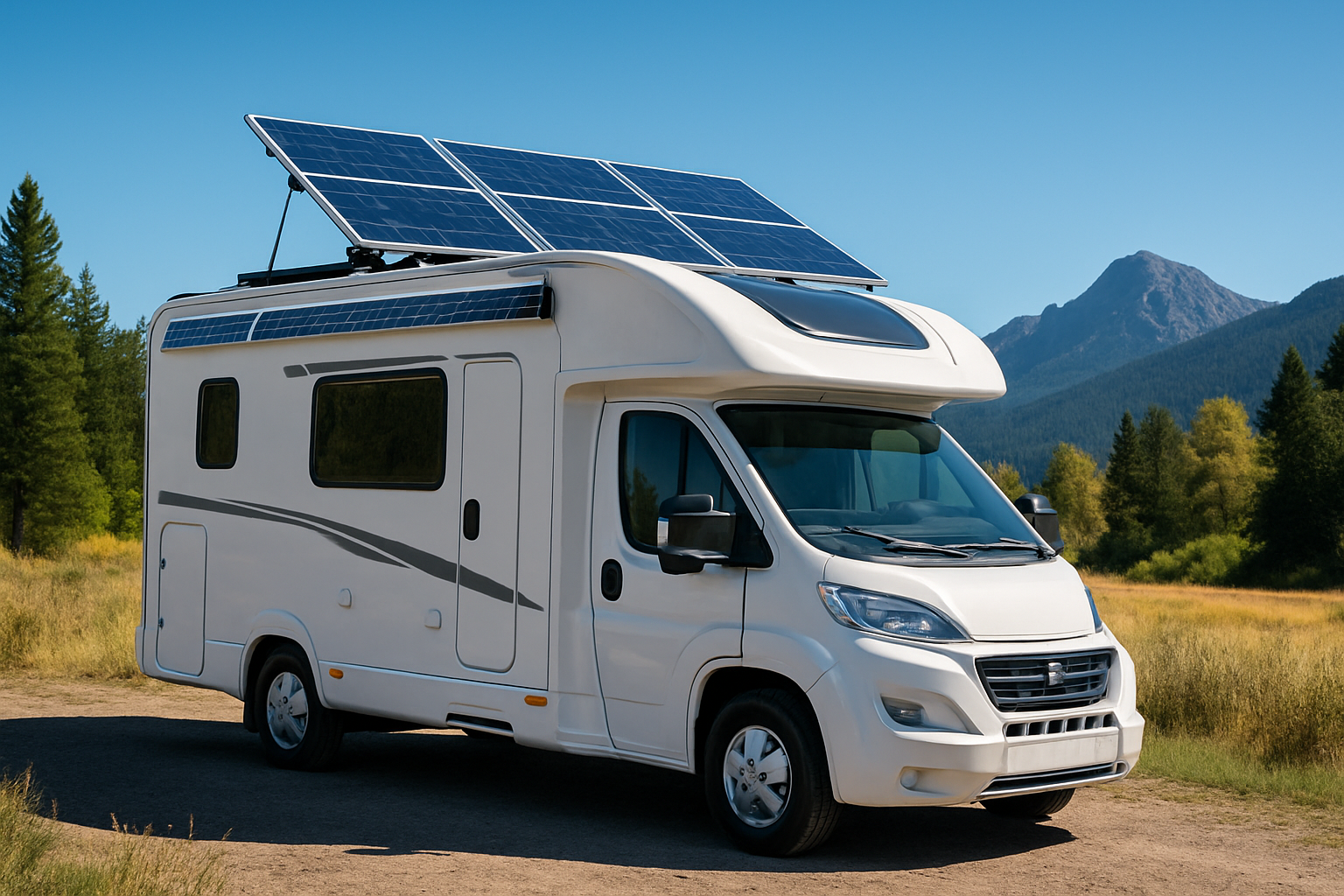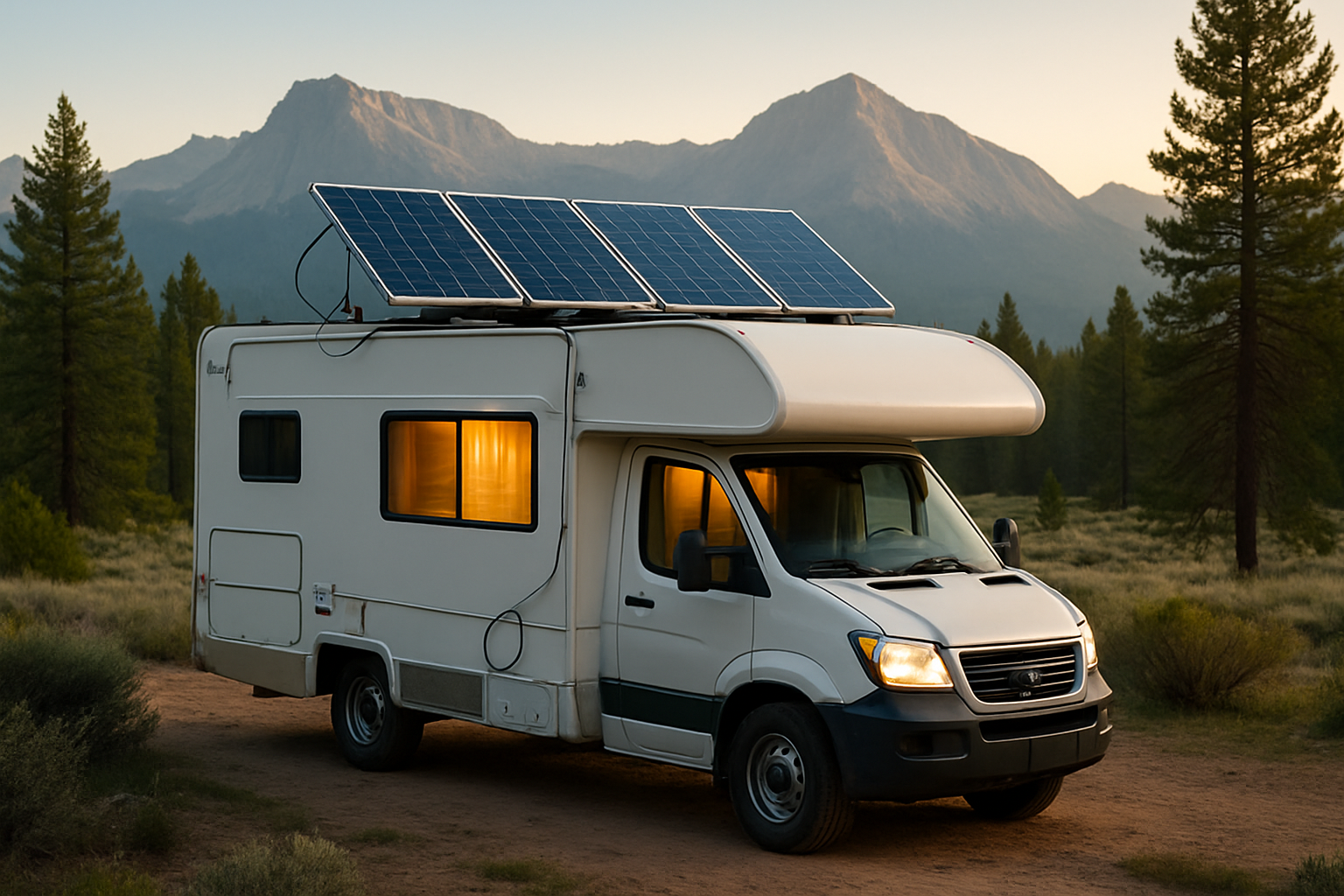Campervan travel offers unparalleled freedom, and a reliable power supply is key to fully enjoying the experience. Solar energy provides a clean, sustainable way to power your appliances, from refrigeration to device charging. Optimizing your campervan solar system maximizes energy harvest and enhances your energy independence. This article shares seven field-tested tips to boost your solar panel output and ensure consistent power for your adventures.

1. Strategic Panel Placement and Angle
The orientation and tilt of your solar panels significantly impact energy generation. For fixed panels, orienting them towards the equator (south in the Northern Hemisphere, north in the Southern Hemisphere) ensures maximum direct sun exposure. While this maximizes midday performance, research from the IEA's Next Generation Wind and Solar Power (Full Report) suggests that fixed-tilt installations with a combined east-west orientation can allow for up to 75% more modules to be installed, potentially increasing overall energy harvest by capturing more morning and late afternoon sun.
Sun-tracking systems, as highlighted in IEA's Solar Energy Perspectives report, can increase and even out PV production over the day. For campervans, manually adjusting your panels' tilt and swivel throughout the day can yield similar advantages. Consider seasonal changes: a steeper angle is better in winter, a flatter angle for summer. Even small adjustments can lead to noticeable gains.
2. Consistent Cleaning and Maintenance
Solar panel efficiency is highly susceptible to surface cleanliness. Dust, dirt, pollen, leaves, and bird droppings create a barrier, preventing sunlight from reaching the photovoltaic cells. Even a thin layer of grime can reduce power output by 10-20%. Regular cleaning maintains optimal performance and extends panel lifespan.
- Cleaning Schedule: Clean panels every few weeks, especially after dusty roads or wooded areas. A quick rinse often removes loose debris.
- Cleaning Method: Use a soft brush or sponge with plain water. For stubborn grime, a mild, non-abrasive soap designed for solar panels can be used. Clean panels when cool (early morning or late afternoon) to prevent water spots or thermal shock. Avoid abrasive materials, high-pressure washers, or harsh chemicals.
- Visual Inspection: Periodically check for physical damage like cracks or delamination. Inspect wiring for loose connections, fraying, or corrosion. Secure any loose components.
3. Right-Sizing Your Solar System
An efficient solar setup begins with a system tailored to your energy demands. Over-sizing incurs unnecessary costs and weight; under-sizing leaves you short on power. First, calculate your daily energy consumption in watt-hours (Wh). List all appliances, their wattage (W), and estimated daily operating hours. Multiply wattage by hours for each, then sum for your total daily consumption.
For example, if your daily consumption is 1500 Wh, and your panels receive an average of 5 effective sunlight hours, you need approximately 300W of solar panels (1500 Wh / 5 hours). This provides a baseline for selecting solar panel wattage and battery bank capacity. Pairing this with a robust energy storage solution, such as a high-performance lithium iron phosphate (LiFePO4) battery, ensures power even without sun. Cumulative electricity storage deployment saw significant growth from 1960 to 2020, highlighting the importance of reliable energy storage.
Consider future additions. A slightly larger system provides peace of mind and flexibility for occasional higher usage or new appliances without immediate upgrades.
4. Employing Efficient Charge Controllers
The charge controller regulates voltage and current from your solar panels to your battery bank, crucial for battery health and maximizing harvested power. Choosing the right type significantly boosts campervan solar efficiency.
- PWM (Pulse Width Modulation) Controllers: Simpler and more affordable. They connect the solar panel directly to the battery, dropping panel voltage to match battery voltage. This wastes power, especially when panel voltage is much higher than battery voltage, as excess voltage is "clipped."
- MPPT (Maximum Power Point Tracking) Controllers: More advanced and efficient. MPPT controllers actively track the maximum power point (MPP) of the solar array, converting excess voltage into additional current. This harvests up to 10-30% more power compared to PWM controllers, particularly in cooler temperatures, low light, or partial shading. MPPT controllers are a superior choice for maximizing solar output and providing faster, more efficient battery charging.
5. Optimizing Battery Health and Management
Your battery bank is the critical reservoir for your campervan's off-grid power. Its health dictates overall efficiency, reliability, and longevity. Lithium iron phosphate (LiFePO4) batteries are a superior choice for recreational vehicles due to their high performance, safety, and long cycle life. Our company specializes in manufacturing these reliable and scalable lithium batteries, integral to modern energy storage systems.
- Proper Charging: Ensure your charge controller and inverter are correctly configured for LiFePO4 batteries. Incorrect charging parameters (overcharging or undercharging) severely degrade battery life.
- Discharge Depth: LiFePO4 batteries tolerate deep discharges better than lead-acid. While they can discharge to nearly 100% depth of discharge (DoD), avoiding consistent full discharge cycles extends their lifespan. Aim for an average discharge depth of 80% or less.
- Temperature Management: Extreme cold or prolonged high heat can affect LiFePO4 battery efficiency and longevity. Install your battery bank in a well-ventilated area, protected from direct sunlight and harsh temperatures.
- Battery Management System (BMS): A robust BMS, often integrated into quality LiFePO4 batteries, monitors and protects against overcharge, over-discharge, over-current, short circuits, and extreme temperatures. This ensures safe, efficient operation and balances individual cell voltages.
6. Minimizing Shade Impact
Solar panels are highly sensitive to shading. Even partial obstruction drastically reduces the output of an entire array. A shaded cell acts as a resistor, impeding current flow from unshaded cells, potentially creating "hot spots" that damage the panel and diminish efficiency. This is critical for series-connected panels.
- Strategic Parking: Prioritize parking spots free from tree shadows, buildings, or other obstructions. Pay attention to the sun's path during peak sunlight hours (10 AM to 4 PM).
- Panel Arrangement and Wiring: Parallel wiring can mitigate shading impact better than series wiring. Panels with bypass diodes (standard on modern panels) or systems using micro-inverters/power optimizers further reduce shading effects by allowing shaded sections to be bypassed.
- Regular Trimming: If you frequently park near trees or if campervan features cast shadows, consider trimming branches or repositioning accessories.
7. Continuous System Monitoring and Refinement
To maximize campervan solar output, understand your system's real-time performance. Monitoring tools provide data on power generation, battery status, and energy consumption. This insight helps identify inefficiencies, troubleshoot issues, and make informed adjustments.
- Monitor Key Metrics: Track solar panel output (watts or amps), battery state of charge (%), and appliance consumption. Many modern charge controllers and inverters offer integrated monitoring via displays or apps.
- Identify Usage Patterns: Observe energy consumption patterns to make proactive adjustments. Run high-draw appliances during peak sunlight hours to reduce battery reliance.
- Inverter Efficiency: Your solar inverter converts DC from panels and batteries into AC for appliances. An inefficient inverter wastes power. Ensure your inverter is appropriately sized and operates efficiently. Our solar inverters convert DC to AC effectively and reliably, supporting off-grid power needs with minimal energy loss.
Achieving Energy Independence
Optimizing your campervan solar system is an ongoing process. Implementing these seven field-tested tips significantly boosts your campervan solar efficiency, ensuring a more reliable, sustainable, and robust power supply for your travels. This enhances comfort and convenience while contributing to a cleaner energy footprint. Our commitment is to provide reliable and scalable energy solutions, helping customers achieve true energy independence with advanced lithium battery manufacturing, comprehensive energy storage systems, and integrated off-grid solar solutions.
Frequently Asked Questions
How much solar power do I need for my campervan?
The amount of solar power depends on your daily energy consumption. List all electrical appliances, their wattage, and daily operating hours to calculate total daily watt-hours. From this, determine required solar panel wattage and battery capacity, factoring in sunlight hours and desired autonomy. A typical campervan might need 100W to 400W of solar panels and a 100Ah to 400Ah (12V equivalent) battery bank.
Can I use regular car batteries for my campervan solar system?
While technically possible, it is not recommended for sustained use. Regular car batteries are designed for short, high-current bursts (engine starting), not deep cycling (repeated discharging/recharging). They degrade quickly in solar applications. Deep cycle batteries, especially lithium iron phosphate (LiFePO4) batteries, are engineered for sustained power delivery and boast a much longer lifespan in solar setups.
How do I know if my solar panels are working efficiently?
Many modern solar charge controllers and inverters offer monitoring displays or apps showing real-time power generation, battery charge status, and consumption. Regularly checking these metrics indicates system performance. A noticeable drop in output without a clear reason (like heavy shading or cloudy weather) might indicate an issue requiring inspection.
Is it worth investing in an MPPT charge controller?
For most campervan solar systems, especially those with higher wattage panels (over 100W) or in varying weather conditions, an MPPT charge controller is a highly worthwhile investment. It harvests significantly more power (typically 10-30% more) from your solar panels compared to a PWM controller. This increased efficiency often justifies the higher initial cost over the system's lifespan, leading to faster charging and more available power.
How often should I clean my campervan solar panels?
Cleaning frequency depends on your travel environment. If you frequently drive on dusty roads, camp in areas with pollen/leaves, or experience bird activity, clean them every few weeks. In cleaner environments, once a month or every couple of months might suffice. A visual check or noticeable drop in power output indicates a need for cleaning.





Leave a comment
All comments are moderated before being published.
This site is protected by hCaptcha and the hCaptcha Privacy Policy and Terms of Service apply.